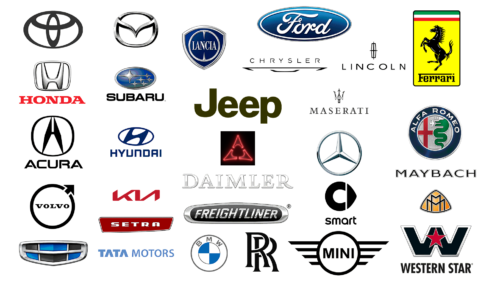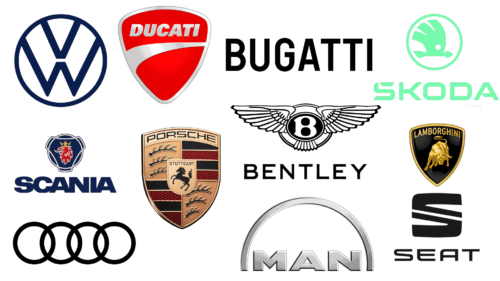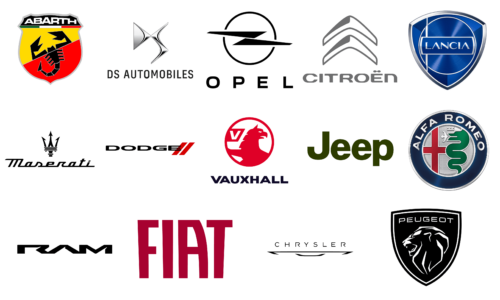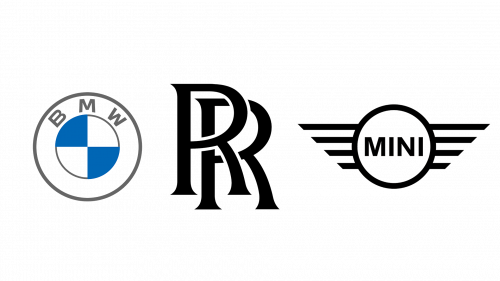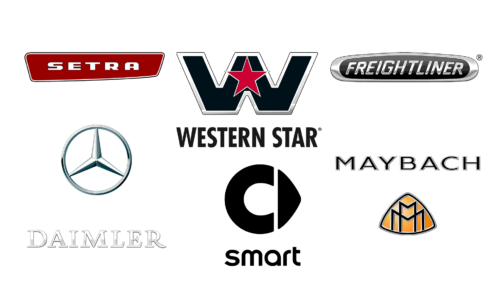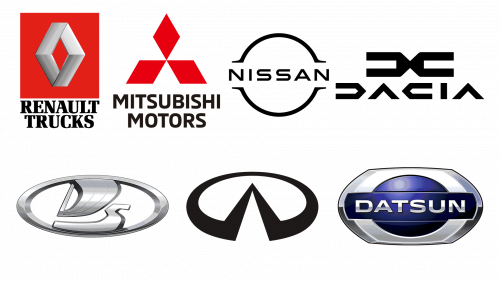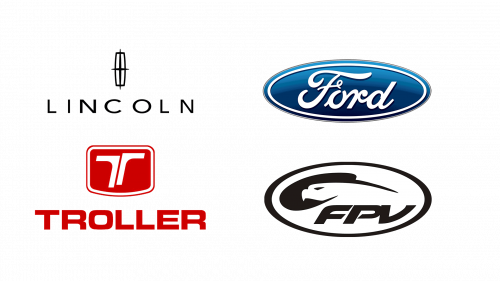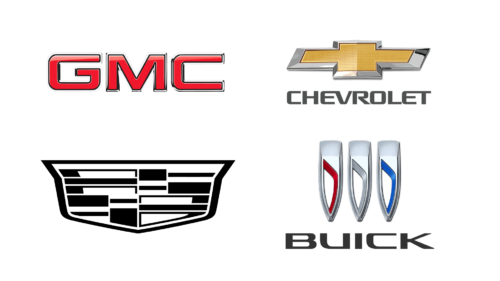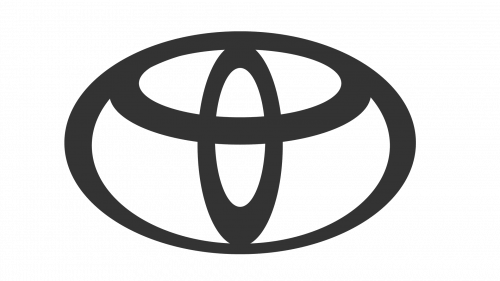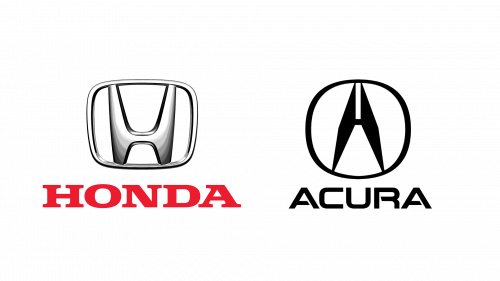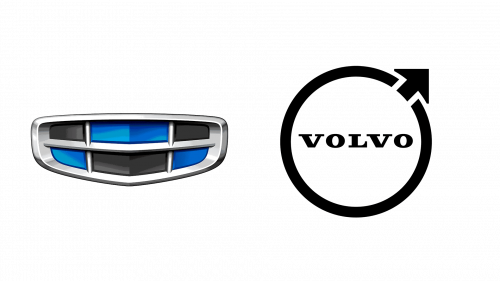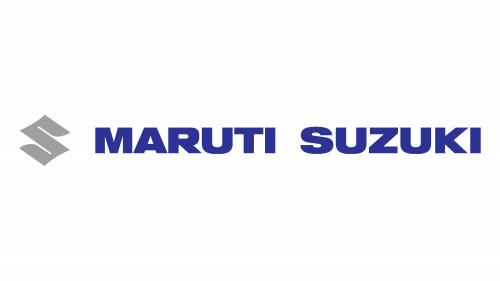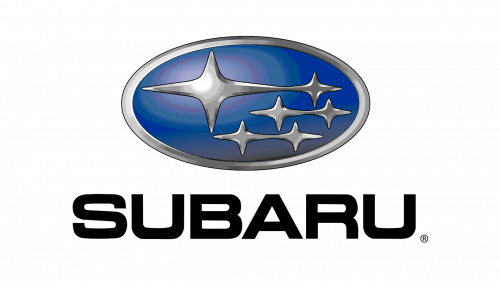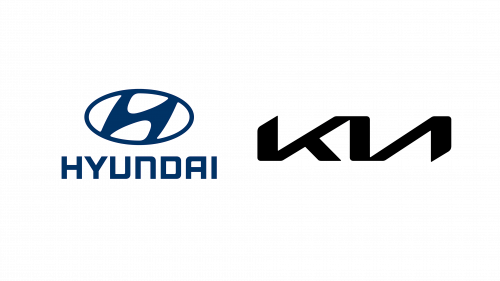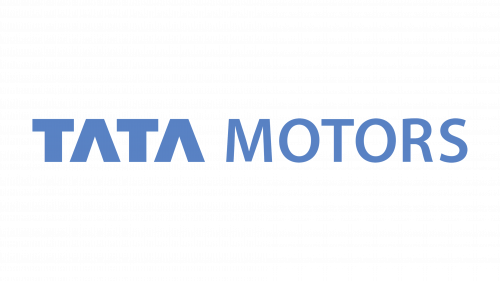Lee Iacocca, the great American auto industry manager, once said that by the beginning of the 21st century there would be only a few really big players in the global automotive market – corporations and alliances that would own the vast majority of car brands. He turned out to be absolutely right. It was at the turn of the century and a little later that the most active wave of mergers and closures of several companies began.
Today’s car market is dotted with a variety of brands. But not everyone knows that the majority of car brands do not exist by themselves and almost each is a big automobile concern. Of course, there are independent brands, but their number can be counted on the fingers of one hand.
In fact, in today’s world, there are only a little more than a dozen large conglomerates that own all of these brands and produce about 90% of all cars. And four of them have more than 10% of the market each.
For example, did you know that the German brand Opelhas long been owned by the American company General Motors, and the legendary Swedish car brand Volvois now fully owned by the Chinese car corporation?
Who owns the majority of world car brands, who owns who, and who exists autonomously – in this article we tried to answer all these questions and structure the information in the most accessible and convenient for you. For this purpose, for our part, we have taken and sorted all the famous car brands by the corporations that own them at the moment. Thanks to our catalog you will be able to learn more about what car brand belongs to a particular car company.
For your convenience, we have divided all automobile concerns into continents, but in some cases, it was difficult because the companies were formed by merging manufacturers from different continents.
European Automobile Concerns
Volkswagen Auto Group (VAG)
The world champion in car sales is the German Volkswagen AG headquartered in Wolfsburg. VW began actively buying brands back in the 1980s. The first was the Spanish SEAT in 1986 and in 1991 the Germans bought the Czech Skoda. In 1998, Bentley, Lamborghini (purchased by a subsidiary of Audi), and Bugatti were added to its portfolio, and since 2009 the hunt for Porsche began, and by 2012 VW became the parent company. In 2009, the Germans bought a majority stake in Scania, and in 2011 – MAN. Also in 2011, Audi bought the motorcycle company Ducati Motor Holding S.p.A.
The company officially employs about 375,000 people. The production of cars under the management of “Volkswagen AG” is organized in more than 20 countries. The main activity of the company is directly related to the mass production of automotive products.
The concern ownsthe following auto brands:
Stellantis
Launched in December 2019, the merger of auto giants Peugeot S.A. (Groupe PSA) and Fiat Chrysler Automobiles N.V. (FCA) was officially completed on January 16, 2021, resulting in the formation of Stellantis Corporation, the world’s fourth-largest automaker by volume after Toyota, Volkswagen Group and the Renault-Mitsubishi-Nissan alliance.
Stellantis is present in more than 130 global markets, has manufacturing facilities in more than 30 countries, and employs more than 300,000 people. The company has a broad portfolio of automotive brands, mobility services, parts, and after-sales services. The company strives to be the best, not the biggest, by working for the benefit of all its shareholders as well as the communities in which it operates.
The concern owns the following auto brands:
BMW Group
BMW Group AG (Bayerische Motoren Werke AG) manufactures automobiles, motorcycles, and engines for them. The headquarters is located in Munich, Germany. The official date of the foundation of the concern is 1916. In 1994, the company has acquired the shares of the above-mentioned brands. The exception is Rolls-Royce, which became a division of BMW in 1998. In 2000, due to regular losses, BMW sold its Land Rover division to American Ford (which, in turn, sold LR to Indian Tata in 2008), and production facilities Mini transferred to a separate newly formed subsidiary, which still produces revived MINI. BMW has assembly plants in Germany, Russia, the USA, South Africa, Mexico, Hungary, Egypt, India, and China.
The BMW Group consists of:
- BMW;
- Rolls-Royce;
- Mini;
- BMW Motorrad.
Daimler Group
The last 100 percent European concern on our list is the German Daimler. The Daimler concern is the same as the BMW concern. The main focus is the production of Mercedes-Benz, and in addition, already produces small cars Smart and premium Maybach.
The company’s headquarters is located in Stuttgart. The firm appeared in 1926 and was called Daimler-Benz AG. It formed as a result of a merger of two individual German manufacturers. In addition to the production of passenger cars, the company has been also engaged in the production of trucks, as well as various models of buses and motor vehicles.
Mercedes-Benz cars are produced in Germany, Austria, Egypt, Hungary, Indonesia, Malaysia, Mexico, Russia, Spain, South Africa, Thailand, the USA, and Vietnam.
The Daimler Group includes the following brands:
- Mercedes-Benz;
- Mercedes-AMG;
- Maybach;
- Smart;
- Daimler Trucks Group;
- Mercedes-Benz Vans Group;
- Freightliner;
- Western Star;
- Thomas Built Buses;
- Setra;
- BharatBenz
Renault-Nissan-Mitsubishi alliance
Among the world’s largest automakers it is impossible not to mention the Renault-Nissan alliance, which owns such brands as Samsung, Infiniti, Nissan, Dacia, and Renault.
The merger of brands such as Nissan and Renault has formed a rather large concern. This was because at the time of the merger, the companies already owned several brands. Subsidiaries of Nissan are premium Infiniti and budget Datsun. Renault, in turn, had such brands as Dacia, Samsung Motors, and Avtovaz in its division. Mitsubishi Motors Company joined the alliance in 2016 as a big contributor as well.
The group has production facilities in France, Russia, Japan, India, and Brazil. The Renault-Nissan-Mitsubishi Alliance is supervised by a special new body, the Governing Board, which includes the heads of all three companies: Thierry Bolloré (Renault), Hiroto Saikawa (Nissan), and Osamu Masuko (Mitsubishi).
The peculiarity of the alliance is the absence of headquarters. The formed “trio” continues to design cars under well-known brands. But the partners have the full right to use each other’s innovative developments.
The group includes such automobile brands as:
Aston Martin
Aston Martin is a legendary British company specializing in the production of ultra-expensive sports supercars. The production of cars of this brand began with the construction of a sports coupe by Robert Bamford and his companion Lionel Martin in 1914. And only in 1920 the serial production of sports cars, light, powerful, and maneuverable, was established. The wave of success lasted until World War II when there was a temporary lull in sales of luxury cars that lasted until 1947. Then Aston Martin changed ownership. David Brown became the new CEO.
The next stage of the brand’s development was the company’s transition to Company Development Ltd, and then to Ford Motor Company. In 2020, Aston Martin got a new investor, Canadian billionaire Lawrence Stroll, followed by a new CEO (former head of AMG division Tobias Moers), and Daimler became the largest shareholder (20% of shares). The new strategy provides for a complete transition to AMG engines, and in this regard, the company began to reshape the development plan of the model range.
American Automobile Concerns
Ford Motor Company
Currently, the American company “Ford” ranks fourth in the world among all the world’s car manufacturers. In the American car market itself, this company occupies the third position in sales, second only to such auto corporations as “General Motors” and “Toyota”. The brand was founded in 1903. The brand name has not changed throughout the history of automobile production.
Before the 2008 crisis, Ford owned such brands as Jaguar, Lincoln, Land Rover, Volvo, and Aston Martin, as well as 33% of Japanese Mazda. Due to the crisis, all brands were sold. Ford still owns only Lincoln, which specializes in the production of premium cars. Lincoln makes luxury cars, mostly for the United States, but Ford’s production geography is still very wide – North and South America, Europe, Australia, and New Zealand.
For more than a century, the concern has bought and sold the rights to own different car marques. Today, its companions include such brands as:
General Motors
General Motors has been the world’s largest automaker for 77 years. Unfortunately, due to the financial crisis in 2008, the company lost its leadership in the global automotive market. Today, the company “General Motors” in terms of production and number of sales is only 3rd place in the world, behind automotive giants such as “Toyota” and “Volkswagen”.
The largest American company began to grow in 1892. Its founder was R.E. Olds. In those years, automakers called Cadillac Automobile Company and Buick Motor Company developed in parallel. In 1903, the three brands merged to eliminate unhealthy competition from the market.
In recent years, General Motors has lost a huge number of its brands: Opel, Saab, Hummer, Saturn, Pontiac, Oldsmobile, Plymouth, and Holden.
GM is headquartered in Detroit and has production facilities on every continent.
Automobile brands that are part of the concern:
Asian Automotive Concerns
Toyota
“Toyota Motor” is one of the world’s largest corporations that is involved in the industrial production of motor vehicles. For several years now, “Toyota” has been the largest automobile manufacturer in the world. The auto alliance appeared in 1935. The first production car – a pickup truck model G 1. The company’s headquarters is located in the Aichi Prefecture and has production facilities around the world.
The main business of the company “Toyota Motor” is the production of cars, trucks, and buses, which are produced under different car brands.
This concern consists of more than 300 small companies that use the Toyota logo. The group consists of:
- Toyota Tsusho Corporation;
- Kyoho Kai Group (211 firms engaged in the production of auto parts);
- Kyouei Kai Group (123 logistics firms);
- Denso
- Lexus;
- Scion;
- Daihatsu;
- Hino;
- Ranz
Honda Motor Company
The leading Japanese manufacturer of motor vehicles is currently one of the ten most active and influential automobile concerns. Honda was founded in 1948. Honda has production facilities in Japan, the USA, Canada, Mexico, Britain, China, Turkey, Thailand, Indonesia, Malaysia, Vietnam, Argentina, and Brazil.
“Honda Motor is one of the world’s leading manufacturers of motor vehicles and cars. The main divisions of the company are engaged in the development and production of various motor vehicles, ranging from mopeds to sports bikes. Recently, the company became a world leader in the production of ATVs.
But, despite the obvious focus on the production of motorcycles and other motorcycles, the Japanese company “Honda Motor” is also one of the largest companies in the automotive industry. Each year the Japanese automaker manufactures a variety of car models for the world.
However, besides its main brand, the Japanese manufacturer of cars and motorcycles Honda can boast of only one company. It is the brand Acura, which was founded by Honda itself to produce cars in the premium segment.
Here is the list of automobiles that are owned by Honda Motor:
Zhejiang Geely
Geely is a Chinese company, which by mistake is also considered independent. In fact, the letters of the logo on all cars of the brand are the name of the parent company. It was founded in 1986. “Zhejiang Geely Holdings Group” is one of the ten largest Chinese automobile companies. At the moment, this holding company owns nine large car plants in China.
In addition to the usual production of cars, the company is also engaged in the production of cars for taxi transport, motorcycles, engines, and gearboxes. This company today has become known throughout the world, it happened after she bought the legendary Swedish car brand “Volvo”.
Here is the list of automobiles which belong to the company “Zhejiang Geely Holdings Group:
Suzuki
The Japanese company “Suzuki Motor Corporation” is one of the largest firms among automobile corporations in the world. “Suzuki Motor” produces trucks and cars. Among other things, this company is also a global manufacturer of both motor vehicles and boat engines. Suzuki is the third company by sales in Japan. But its main “cash” Suzuki makes due to the Indian market, where it sells a huge amount of its cars under the Maruti Suzuki brand. The company’s facilities are located in Japan, but it assembles and sells clones of Japanese models all over the world. For example, SX4 is Fiat Sedici in Europe, Alto is Nissan Pixo, and Vitara is Chevrolet Tracker in America, and this list is almost endless.
Here’s a list of automobiles that are owned by Suzuki Motor Corporation:
Mazda Motor
Mazda Motoris the largest automobile manufacturing company in Japan, which is also the largest company on the world stage of the automotive industry. The main activity of the company is the production of cars. Car plants are located in many countries around the world.
Mazda Motorproduces cars under the brand name:
Fuji Heavy Industries
Fuji Heavy Industries Company began its operations back in 1917. During the Second World War, the company was the world’s largest manufacturer of aircraft. After World War II, the Japanese corporation “Fuji Heavy Industries” through a merger with several companies has become one of the largest companies to produce cars on the world stage.
“Fuji Heavy Industries” produces intercity buses as well as cars. Including the company that produces military helicopters for the Japanese army. Also, this Japanese concern is now a major manufacturer of civilian helicopters, which are known throughout the world.
Here is the list of cars, which belong to the “Fuji Heavy Industries” company:
Hyundai-Kia
Hyundai-Kia Automotive Groupis a South Korean automobile corporation, which ranks second in terms of production volume in Asia, second only to the well-known company “Toyota”. Also “Hyundai-Kia Automotive Group” company takes fourth place in the world among all well-known world automakers, i.e., after “General Motors”, “Volkswagen Group” and “Toyota” companies.
The history of this giant, exactly a combined company, began just in 1998 when Hyundai Motors absorbed the oldest Korean company, Kia. In 2015, the Genesis luxury sub-brand also appeared. The conglomerate is headquartered in Seoul, with plants in South Korea, Russia, Turkey, America, China, the Czech Republic, India, and Brazil.
The main activity of the corporation in the automotive market is the production of passenger cars, crossovers, SUVs, buses, commercial vehicles, as well as trucks.
Here is the list of automobiles, which belong to “Hyundai-Kia Automotive Group” company:
BAIC Group
BAIC is one of the oldest concerns in China, founded in 1958. It is among the top 10 automakers in China. The main export markets for the company are Russia, South Africa, Vietnam, Egypt, Mexico, Brazil, Colombia, Bangladesh, India, and the Philippines.
In 2022, the company’s annual production and sales volume of 1.45 million vehicles, and the company’s operating income rose 4.7% last year to reach 450.7 billion yuan. The brand’s product lineup includes sedans, SUVs, crossovers, commercial vehicles, and so on. In addition to gasoline cars, BAIC is also the first company in China to obtain the right to produce electric cars.
The main subsidiaries of BAIC Group are BAIC Motor (passenger cars), BAW (military and SUV vehicles), Foton Motor (trucks, buses, agricultural machinery), and Changhe (minibusses and SUVs). The joint ventures Beijing Hyundai and Beijing Benz produce Hyundai and Mercedes cars for the Chinese market, respectively.
SAIC Motor Corporation
Shanghai Automotive Industry Corporation (SAIC) is a Chinese state-owned automobile manufacturer. The largest Chinese automaker, it is a member of the “Big Four” together with Changan, FAW Group, and Dongfeng Motor Corporation. Over its long history, SAIC Motor has made significant achievements in the automotive industry, offering a wide range of high-quality automobiles, commercial vehicles, and electric vehicles to consumers around the world.
SAIC Motor’s core businesses include the development, production, and sales of passenger cars, commercial vehicles, buses, engines, and other automotive components. SAIC Motor has several brands such as MG, Maxus, Roewe, and Baojun, and has joint ventures with leading global manufacturers including Volkswagen, General Motors, Iveco, and others.
And at the end of June 2024, Chinese automaker SAIC and Germany’s Volkswagen signed agreements to cooperate on new energy technologies.
- IM Motors;
- Maxus;
- MG Motor;
- Rising Aut;
- Roewe;
- Baojun;
- Wuling Motors;
- SAIC Hongyan;
- Sunwin
FAW Group
First Automotive Works (FAW) is the oldest corporation in China and one of the largest in the world. It was founded in 1953. In the 1970s, Western capital and technology began to come to China. Cooperation with General Motors and with Volkswagen began. In 1980-1990 FAW established joint ventures with Toyota, Ford, and Mazda.
In 1990, the FAW-Volkswagen Automobile joint venture was founded, and production of the second-generation Volkswagen Jetta began at FAW Group plants. In 2002, FAW Group and Mazda Motor Corporation signed a technical cooperation agreement to produce the Mazda 6 sedan. In the same year, FAW Group and Toyota Motor Corporation signed an agreement to establish a strategic and long-term partnership.
Today, FAW Corporation ranks 125th in the Fortune Global 500 and is present in 40 countries. It owns 28 wholly-owned subsidiaries and 18 partially-owned subsidiaries with a shareholding of more than 50%.
Dongfeng Motor Corporation
Dongfeng Motor Corporation is one of China’s leading automobile groups. The company was founded in 1969, and today holds a significant market position with an annual output of more than 3.2 million vehicles.
The main activities of Dongfeng Motor Corporation are the production of passenger and commercial vehicles, automotive units, spare parts, accessories, and various equipment, as well as the provision of maintenance services.
Dongfeng Motor is now among the fastest-growing and most promising automobile manufacturers in the world. Overseas business covers more than 100 countries and regions, and R&D centers in China, Sweden, and Germany continue to strive for innovations that shape the future of the automotive industry. The company is constantly developing and offering innovative high-tech products, confirming its reputation as one of the leaders in its segment.
Changan Automobile
Changan Automobile, also known as CHANA, is one of the largest automobile manufacturers in China. The automobile concern is one of the five largest automobile enterprises in the Celestial Empire. Changan Automobile has six production sites in China – in Chongqing, Beijing, Jiangsu, Hebei, Zhejiang, and Jiangxi, as well as 15 car and engine manufacturing plants – including overseas, in Egypt and Mexico.
The name of the brand consists of two parts – Chang which stands for “long-term” and An which is “safety”. The concept of the company, founded in 1862, can be formulated as “time-tested reliability”. The Changan cars are really reliable – they absorbed the advanced developments of engineers from Japan (responsible for the interior), the USA (electronics), Great Britain (engines and gearboxes), and Italy (body design). Changan’s partners are advanced automobile concerns Suzuki, Ford, and Mazda.
Great Wall Motors
Great Wall Motor Ltd is a large Chinese private automobile manufacturing company. The holding company includes four automobile manufacturing plants and 20 subsidiaries producing automobile components. Since 1998, Great Wall has held the first place in sales of pickup trucks in China. The concern is among the 500 largest enterprises in China.
In January 2022, GWM acquired a plant in Brazil and began modernizing it. Earlier, the Group opened a subsidiary in Munich, Germany, and established a European headquarters there to accelerate the realization of its strategy in Europe. With the active development of markets in Southwest and Southeast Asia, South America, Europe, and Africa, GWM has entered a new stage of the globalization process.
And at the 26th Chengdu International Auto Show 2023 Chengdu Auto Show, Great Wall Motor Concern unveiled more than 30 vehicles of five brands: HAVAL, TANK, WEY, ORA, and GWM Pickup. Among them are the HAVAL Raptor equipped with the Hi4 hybrid platform, the first large seven-seat Alpine minivan of the WEY brand, the TANK 400 on the Hi4-T off-road platform, a special version of the GWM POER Shanhai pickup, and many other models.
- Haval;
- Wey;
- Tank;
- Ora;
- Great Wall
Chery Automobile
Chery is a young automobile manufacturing company from China. Starting from unsuccessful copying of foreign models, in a relatively short period of time it managed to earn a reputation of a respected manufacturer with its own philosophy and corporate culture. Founded in 1997, the company produced its one-millionth car in August 2007.
At the beginning of the 21st century, a fifth of Chery’s shares were transferred to the Shanghai-based SAIC Corporation, which by that time had already had successful joint ventures with Volkswagen Group and General Motors. In 2007, Chery Automobile Co., Ltd. and Italian automobile concern Fiat signed a protocol of intent to establish a joint venture for the production of passenger cars. In 2023, the company began an aggressive expansion into the European market.
BYD Auto
BYD Co Ltd is a Chinese company specializing in automobiles and batteries. BYD was founded in February 1995 and is based in Shenzhen, Guangdong Province. The name BYD is an abbreviation for “Build Your Dreams”. In 2003, BYD established BYD Auto, a division that develops and manufactures automobiles. BYD Auto produces both conventional cars with internal combustion engines and electric vehicles. The company is one of the leaders in the Chinese electric car market.
To date, the company has achieved world recognition in the field of creating ready-made molds and car models. Already the first in-house development of the BID concern – the F3 model – proved to be a real success and is still successfully sold today.
Indian Auto Concerns
Tata Motors
Tata Motors is a major global Indian automobile corporation that manufactures cars and trucks. The company also produces buses, commercial vans, military vehicles, and construction equipment. Tata Motors ranks 5th in the world in terms of production volume and terms of output of automotive products.
The Indian corporation is the 4th largest manufacturer of trucks in the world. But the most surprising thing is another, namely, that this company “Tata” also ranks 2nd in the world in terms of production of buses.
Here is the list of automobiles that belong to the Tata Motors group:
Mahindra & Mahindra Limited
Mahindra & Mahindra Limited is India’s largest manufacturer of cars and tractors. Including the company produces special equipment for the military needs of the country and many models of agricultural machinery.
It is worth noting here that Mahindra & Mahindra Limited ranks first in the world in terms of tractor production.
Here is the list of automobiles owned by Mahindra & Mahindra Limited:
Conclusion
Our world is changing rapidly. Naturally, the automotive industry itself is changing. Time is inexorably changing everything around us. The same applies to the automobile world. Yesterday, many modern technologies seemed to us like something fantastic, and today we sometimes do not even think about how complex in design and provision our modern cars have become.
But along with the development of the automobile industry itself is changing and the balance of power in the global automotive market. In this modern and quite complex reality, sometimes it becomes difficult to keep track of everything.
Among the acquisitions and mergers of recent years should be mentioned the transition under the wing of the Chinese Geely brand Volvo and the acquisition of British premium brands Land Rover and Jaguar by the Indian company Tata. The most curious case is the purchase of the well-known Swedish brand SAAB by the tiny manufacturer of supercars Spyker from Holland.
The once-powerful British car industry has told its life a long time ago. All famous British car producers have long ago lost their independence. Their example was followed by small British firms, which passed to foreign owners. In particular, today the legendary Lotus is owned by Proton (Malaysia), and Chinese SAIC bought MG. By the way, the same SAIC before that sold Korean SsangYong Motor to Indian Mahindra&Mahindra.
In the Renault-Nissan alliance, support for each other is provided by partners, and in the Volkswagen Group, mutual assistance is provided by several brands.
As for such companies as Mitsubishi and Mazda, more and more difficulties await them in the future. While Mitsubishi can get help from PSA partners, Mazda will have to survive on its own, which in today’s world is becoming more and more difficult by the day.
In this article, we looked at the largest car companies in the world, which own almost 90% of the most famous car brands. Below is a summary of all of the above.
Which brand belongs to whom?
VW Group: Audi, Skoda, Seat, Bentley, Bugatti, Lamborghini, MAN, Seat, Scania, Porsche, Navistar, Ducati.
Stellantis Group: Citroen, Peugeot, DS, Opel, Vauxhall, Alfa Romeo, Chrysler, Dodge, Fiat, Jeep, Abarth, Maserati, Lancia, RAM.
BMW: Rolls-Royce, Mini, and BMW.
Mercedes-Benz Group: Smart and Mercedes-Benz.
Ford: Lincoln, Troller, FPV and Ford.
General Motors: GMC, Chevrolet, Buick, and Cadillac.
Honda: Acura and Honda.
Toyota: Denso, Lexus, Scion, Daihatsu, Hino.
Geely: LEVC, Lynk&Co, Polestar, Proton, Lotus, Volvo.
Hyundai: Kia, Ioniq, Genesis, and Hyundai.
Mahindra & Mahindra Limited: KG Mobility, Jawa, Pininfarina, BSA.
Renault-Nissan and Mitsubishi: Dacia, Datsun, Renault, Alpine Motor, Renault Korea Motor, Nissan, Mitsubishi, and Infiniti.
Tata Motors: JLR, Tata Daewoo.


